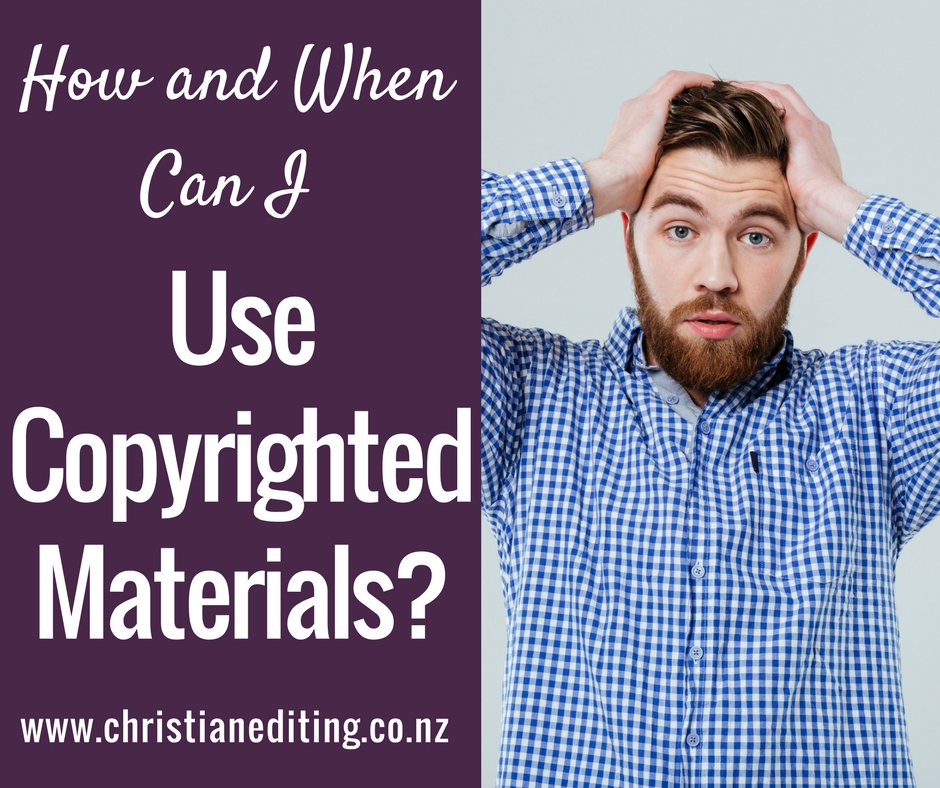As you read this, please note that I am not a lawyer, and this is not legal advice. There is a lot of great information about copyright, but none of it is legal advice. To get legal advice, you pay a lawyer licensed to practice in your state or country.
When Can I Use Copyrighted Material?
In my research, I’ve found three instances where authors and bloggers can use material created by others:
- When the material is not under copyright
- When the copyright holder gives permission
- When the use falls under the doctrine of Fair Use (also known as fair dealing)
When the Material is Not Under Copyright
Public Domain
Not everything is covered by copyright. Works which are not under copyright are considered to be in the public domain. This includes works published in the US before 1 January 1923, or works by authors who died more than seventy years ago (although this “life plus seventy” rule is lower in some countries).
Facts and Ideas
Facts and ideas are not covered by copyright, but the original expression of those facts and ideas is. However, it’s still a good idea to disclose the source of your facts (especially in the modern era of fake news).
When the Copyright Holder Gives Permission
Creative Commons
Some work on the internet is covered by a Creative Commons licence—the best example is WIkipedia. This means people can copy without permission, although they should still give the correct attribution. Copying without attribution is plagiarism. There are several types of Creative Commons licence, and you can find out more at CreativeCommons.org/.
Crown (or Government) Copyright
Many government publications can be reproduced without permission in many circumstances. US government publications are public domain in the US, but copyright outside the US. Many Commonwealth countries use Crown copyright, although the specific regulations in each country are different.
In Australia, the Crown holds copyright to anything first published under direction or control of the government. Legislation and other “prescribed works” may be copied and sold, as long as the sale price doesn’t exceed the price of copying.
In New Zealand, all work produced by government departments and MPs as part of their work is copyright to the Crown. Legislation and certain other documents do not carry any copyright. Logos, emblems, or trademarks can’t be reproduced without permission, probably because that could lead to “passing off” (e.g. the scam emails with official logos claiming you owe money to a power company you don’t use).
Material covered by Crown copyright can be reproduced free of charge without permission, as long as it meets these three criteria:
- Reproduces the material accurately.
- Doesn’t use the material in a derogatory manner or a misleading context.
- Acknowledges the source and copyright status of the material.
These make good guidelines for sharing any material produced by someone else, whether under copyright or in the public domain.
Creative Commons and Crown copyright are effectively forms of the copyright holder giving blanket permission for creators to use their material, as long as creators abide by specific rules. Bible translations are subject to similar terms, as I mentioned last week.
For everything else, creators need written permission from the copyright holder … unless their copying falls under what the US government refers to as “fair use” and the UK and New Zealand governments refer to as “fair dealing”. It’s too much to cover in one blog post, so I’ll cover fair use in my next post.
Meanwhile, let’s look at one more important question: how can we use copyright material?
How Can I Use Copyright Material?
Get Permission
If you want to use copyright material for commercial purposes (i.e. in a book you plan to sell for money), seek written permission from the copyright holder in advance, or ensure your use is covered by fair use/fair dealing (which we’ll discuss in my next post).
Identify Your Quotes
Make it obvious what is a direct quote by:
- Including the quote in quotation marks.
- Changing the look of the quote by using a different font, a different font colour, or a different font style (e.g. bold or italics).
- Separating the quote from the main text by indenting it or placing it in a box.
Not identifying quotes is plagiarism—passing off someone else’s work as your own.
Identify Your Source
This is easy on the internet—you just need to add a hyperlink to the relevant article or blog post. It’s a little harder in a paper document, but that’s why Word includes a References section, so you can easily add captions, citations, footnotes, and endnotes.
Provide attribution to your sources even if they are out of copyright—passing someone else’s work off as your own is plagiarism. It might not be illegal in your jurisdiction (although it is in the US), but it is unethical.
Quote Accurately
Ensure your quotations are accurate—don’t change the meaning.
Keep Quotes Short
Keep your quote as short as you can while still making your point. The longer your quote, the less likely it is to be considered fair use or fair dealing. Note that there is no official formula (e.g. using less than 10%).
Additional Information
For more information on copyright and fair use in your jurisdiction, ask your favourite internet search engine. No, you can’t trust everything you read on the internet, but here are some of the trustworthy source I found:
Government Sites
Copyright New Zealand
Australian Copyright Council
Copyright law in the USA
UK Copyright Service
New Zealand Intellectual Property Office
University Sites
Harvard University
Stanford University
Not-for-profit Sites
Creative Commons
Plagiarism.org
Individual blogs and posts from lawyers or publishing professionals
The Passive Voice Blog
Susan Spann
Kristine Kathryn Rusch


One comment